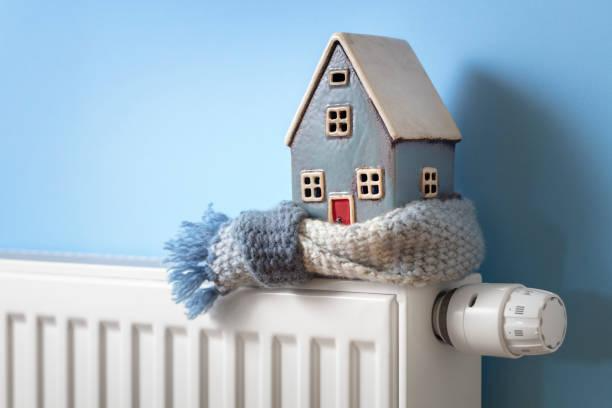
Keep your tenants warm and your rental property in top-notch condition as the weather drops this winter season. If you want to get the most out of your investment, while keeping tenants satisfied and avoiding weather-related repairs, you need to pay attention to seasonal maintenance. When temperatures drop below a certain level, it's common for pipes to freeze or poor insulation to increase your heating bill drastically. To avoid breaking into your emergency fund to solve preventable problems, we've put together a guide on protecting your rental property from cold weather concerns.
Prioritize proper insulation to minimize heat loss from your rental apartments. While windows and doors do their best to keep the chill-out, over time their performance starts to wear as cracks and crevices form in between walls. As a result, those gaps might cause a draft which allows the cold winter air to seep into your home and forces your HVAC system to work double time to keep the house warm. Thus, it would be best to add caulk and consider weatherstripping these spaces. You can also add extra insulation to vulnerable parts of the house like your attic, basement, and crawl spaces.
Schedule professional HVAC system inspections before winter kicks into full gear to ensure you're ready. Aside from ensuring that your heating system runs efficiently, regular checkups allow professionals to identify potential problems and fix them before they spiral. After all, the last thing you want is to deal with an HVAC system breakdown during peak winter. Not only would such an ill-timed fault be a major inconvenience to your tenants, but it would also be more expensive to fix. Bay Property Management Group agrees that prioritizing winter maintenance tasks can avoid incidents in your home.
Grab a ladder and inspect your roof for potential damage that could create unnecessary drafts in your home. With falling leaves and broken branches, fall can wreak a lot of havoc on your roof which can make the winter season colder if you don't address the issues on time. Before the weather becomes too cold, it's advisable to perform a thorough roof inspection to identify any broken shingles or weak spots that need fixing. Additionally, it would also be a good time to clear out your gutter to prevent melting ice from getting stuck in your drainage.
Cut your utility bills significantly by investing in a programmable thermostat. Insulating your property can bring in savings as it decreases the wear and tear on your HVAC system, but a programmable thermostat also reduces your HVAC workload. Instead of keeping your home at a steady temperature, even when tenants are asleep or out of the house, thereby wasting valuable energy on heating. A programmable thermostat lets you set up heating schedules, and cut down unnecessary energy costs, saving you valuable cash in the long run.
Increase tenant satisfaction by giving them more control over their home's temperature. If you have a manual thermostat with a default setting, it can be a pain for renters who like it a bit warmer or cooler than you do. Rather than having your tenants wear thick sweaters indoors or sweating excessively, a programmable thermostat makes it easier for them to adjust the heating profile according to their part. This solution makes them feel more comfortable in your rental, without costing you significantly more in heating than a manual thermostat would.
Reduce wear and tear on your HVAC system by installing a programmable thermostat. If your tenants step out of the house, they may have to reduce the HVAC system to save money on energy. On getting back, they'd instantly turn up the heat to escape from the winter cold. That sharp increase or decrease in temperature can put a lot of burden on your HVAC system, increasing the chances of a breakdown along the line. However, a programmable thermostat switches from heating to cooling cycles gradually, which can extend the lifespan of the system and improve its overall efficiency.
Protect your rental property and keep your tenants warm during the colder months by prioritizing winter-related maintenance needs. For example, it's essential to upgrade your insulation by filling up drafty areas around your windows and doors with caulk and weatherstripping vulnerable rooms like your attic and basement. You can also keep your home warm by scheduling routine maintenance of your HVAC system and inspecting your roof for signs of damage. If you're looking to splurge on an effective way to keep your home warm, consider buying a programmable thermostat. This gadget can significantly save you more money on your energy bills, enhance temperature control in your rental, and improve your HVAC system’s efficiency.